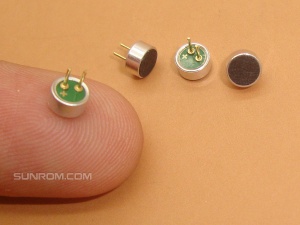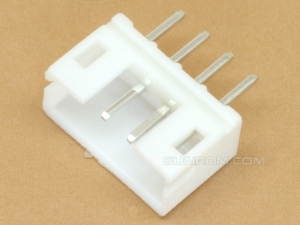Dimmer Module - Digital Control - 256 Steps
Ac Phase Angle Control, serial + binary contol, Suitable for resistive and light inductive load like Ceiling fans.
Control dimming from Parallel input or Serial Data input. The control part is totally isolated from high voltage by on board optocouplers.
This board is very much improvement over our earlier 16 step board allowing more smooth control in dimming due to more steps.
The board can be used in applications where dimming of 110-220V AC power is required like dimming of resistive loads and light inductive load (like ceiling fan, Do not try to use it with heavy loads like AC, Motors, halogen, transformers). The input can be simple 8 bit binary signal from microcontroller which is isolated with the use of opto-couplers or serial data input.
Total of 256 levels of power control can be set from totally off(0%) to full on(100%) as per input control levels.
Features
- AC Phase Angle Control Dimming
- Simple to use with any microcontrollers
- Output can switch on AC Load upto 12 Amp
- Output is optically isolated from input
- 256 Levels of Control
Specification
|
Parameter |
Pin |
|
AC Input |
80V AC to 250V AC |
|
AC Load Current |
12 Amp Maximum |
|
AC Load Type |
Bulb (Resistive Load) up to 1000 Watts |
|
Frequency of mains |
50 Hz or 60 Hz |
|
Control Input Voltage |
5V DC Isolated |
Theory of Operation
In this dimmer, the alternating current (AC) phase control method is used to control the intensity of an incandescent lamp or fan, which is connected as a load. The rms value of the voltage supplied to the lamp is varied by controlling the firing angle of a Triac. The firing angle is the time the Triac is made on. The firing angle is determined by the control input. By controlling the firing angle, the rms voltage supplied to the load changes and according to the voltage light intensity of the bulb varies. Figure displays the effective voltage applied to a load by controlling the firing angle, α.

Controlling Input - Parallel method
The input to board is simple 8 bit binary input of HIGH/LOW signal from microcontroller. There are eight inputs to board D0-D7. Each data control line needs to be now made either HIGH or LOW as per dimming required. The binary input is inverted. All parallel inputs have internal pull high. So if kept floating they all have value of 0xFF(255) which is off level. If full level is required all inputs are to be pulled low 0x00(0). you can then input any binary signal from 0x00 to 0xFF(0-255 decimal) to control the dimming.
Ground signal has to be common with external control board along with parallel inputs.
Controlling Input - Serial method
The input to board is simple one byte character from microcontroller or PC. If byte 0 is sent then dimming is off, if byte 0xFF is sent it gives full level of brightness. Anything in between 0x00 to 0xFF is sent then it gives different levels of dimming.
Ground signal has to be common with external control board along with parallel inputs.
While controlling with serial method, keep all D0-D7 pins floating, Do not use it. If any pin from parallel is kept at low level then Serial inputs will be ignored.
MCU Interfacing Source Code, Serial Method
It’s very easy to interface with microcontroller having UART. Configure your microcontroller to communicate at 9600 baud rate. Output a byte with putchar for level of dimming required.
// Compiler: Keil, Processor any 8051 core
#include <REGX51.H> // standard 8051 defines
// In this demo, we send a byte to board for different dimming levels each second
void delayms(int x) // delays x msec (at fosc=11.0592MHz)
{
int j=0;
while(x>=0)
{
for (j=0; j<100; j++);
x--;
}
}
// -=-=-=-=-=-=-=-=-=-=-=-=-=-=-=-=-=-=-=-=-=
// -=-=-=-=- Main Program -=-=-=-=-=-=-=
// -=-=-=-=-=-=-=-=-=-=-=-=-=-=-=-=-=-=-=-=-=
void main()
{
// -=-=- Intialise Serial Port -=-=-=
//Sets up MCU to use 9600 bps @ 11.059 MHz Crystal
SCON = 0x52; // 8-bit UART mode
TMOD = 0x20; // timer 1 mode 2 auto reload
TH1= 0xfd; // 9600 8-n-1
TR1 = 1; // run timer1
// -=-=- Program Loop -=-=-=
while(1)
{
putchar(0x00); // OFF
delay_ms(1000); // 1 second delay
putchar(0x64); // Low
delay_ms(1000);
putchar(0xFF); // Full
delay_ms(1000);
} // end while
}// end main
PCB Dimensions


































